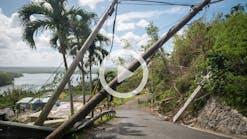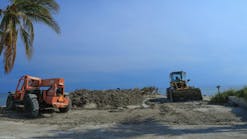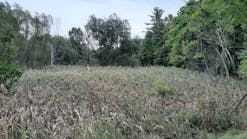Think of flood control and the image of a raging river may come to mind. But small floods—from creeks overflowing their banks or urban stormwater runoff in areas that don’t have adequate drainage—also cause problems. Fortunately, there are some effective products that deliver the solutions needed to prevent or control flooding.
Bellingham Airport
Some people say that flying is for the birds, but when birds flock around airports danger can take wing. One recent example is the “Miracle on the Hudson”: Veteran pilot Chesley Sullenberger successfully landed an Airbus 320 on the Hudson River after birds hit the plane’s engines.
Because many incidents of planes encountering birds end with crashes and subsequent loss of life, the Federal Aviation Administration (FAA) actively works to keep birds away from airports. One way the agency has found to deter birds is for airports to remove the natural and stormwater ponds that attract them.
Bellingham International Airport in Bellingham, WA, had this type of potential safety hazard. Its 7-acre stormwater pond had been a necessary installation for the airport to be in compliance with local and state stormwater regulations. Numerous waterfowl and other species of birds visited the pond daily.
Any solution that would remove the pond’s attraction to birds also had to keep the airport in compliance with stormwater regulations. Finding that solution—one that reduced the 7-acre pond to a fast-draining 2-acre pond—fell to the engineering firm of Reid Middleton of Everett, WA.
“The project started in August 2011 and finished in October of that year. We were able to reduce the detention pond to less than 30% of its original volume,” says Mark Davis, project engineer for Reid Middleton.
Reid Middleton’s solution came from an appropriately named company, Thirsty Duck, which is located in Trinity, FL. Thirsty Duck’s drainage products are based on groundbreaking flow-control technology that operates on the principle of buoyancy.
A Thirsty Duck device drains water at a nearly constant rate. That means that detention volume can be less and the size of stormwater systems can be reduced by as much as 50%, leaving more usable land on a project site. The device can also reduce peak flows and reduce fluctuations in discharge rates to sensitive streams and receiving waters.
Thirsty Duck’s technology comes in two product series. The TD Series is designed for applications needing discharges less than 1.5 cfs (675 gpm). It works via an expanding high-grade polyurethane bellows.
The ER Series, which was installed in the Bellingham International Airport’s stormwater pond, is designed for applications needing more than 1.5 cfs. It fits into standard precast inlet boxes and features a telescoping tube operation.
“The project can handle up to a 100-year storm event. For Washington state, if [a detention pond] is more than 10 acre-feet of volume, you have to install a dam as an additional safety measure,” explains Davis.
He adds, “We had to install a spillway that is 40 feet wide and extends 100 feet down. It is lined with gabion walls and rock.”
At the time of year when the project was done, weather was not a factor, but another challenge came from “a lot of wetland species growing there. We had to dredge the muck out and lay geotextile fabric as a secure base for the rock to go on,” says Davis.
Keeping the fabric steady while the rock was poured on was not easy. Fortunately, there were no steep slopes to deal with.
“We hadn’t, as a company, used Thirsty Duck before, but the Bellingham Airport had used it on other projects,” says Davis. “The original owner of Thirsty Duck worked for the city of Bellingham, and he was well known there.”
Davis likes Thirsty Duck because “it reduces the volume of water building up instantly. Normally you have to build up 2 to 3 feet of water to push the [increasing] water out. The water quantity goes out so quickly.”
Now, instead of a placid pond to fly down to and float on, birds that fly near the Bellingham International Airport see “a sea of rock, with a slight slope toward a pit where the Thirsty Duck is. Everything is rock-lined, so no vegetation can come up,” says Davis.
He adds that the Thirsty Duck is still working fine. There are no concerns about it becoming corroded because it’s made of plastic resin.
This stormwater project at Bellingham International Airport cost about $2 million. It was paid for with a grant from the FAA.







